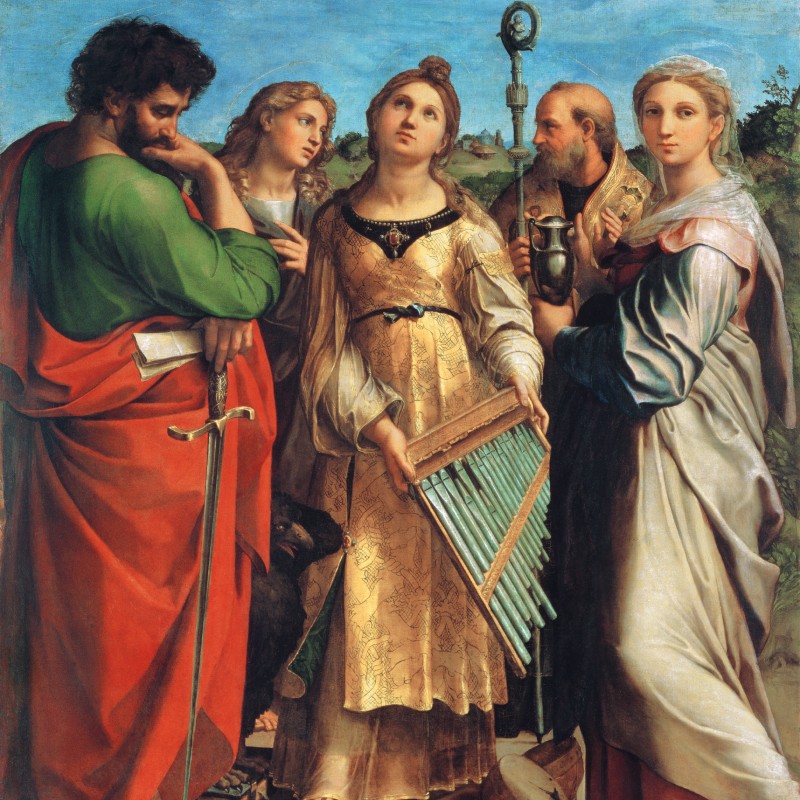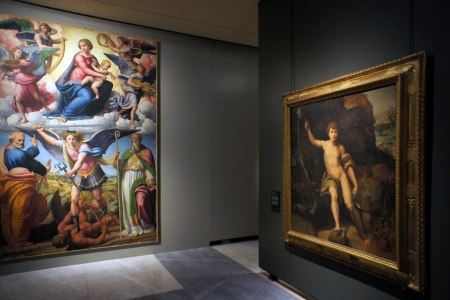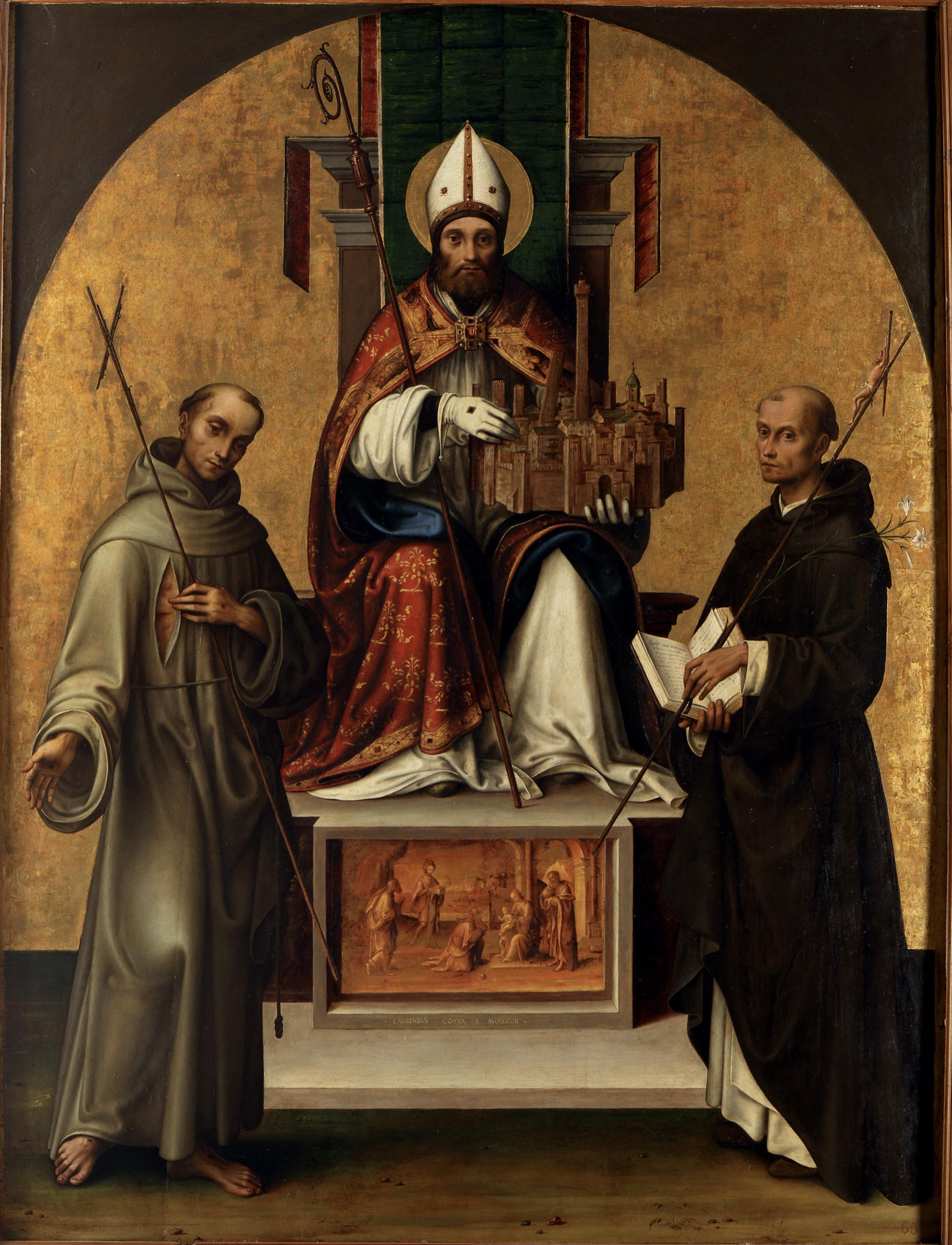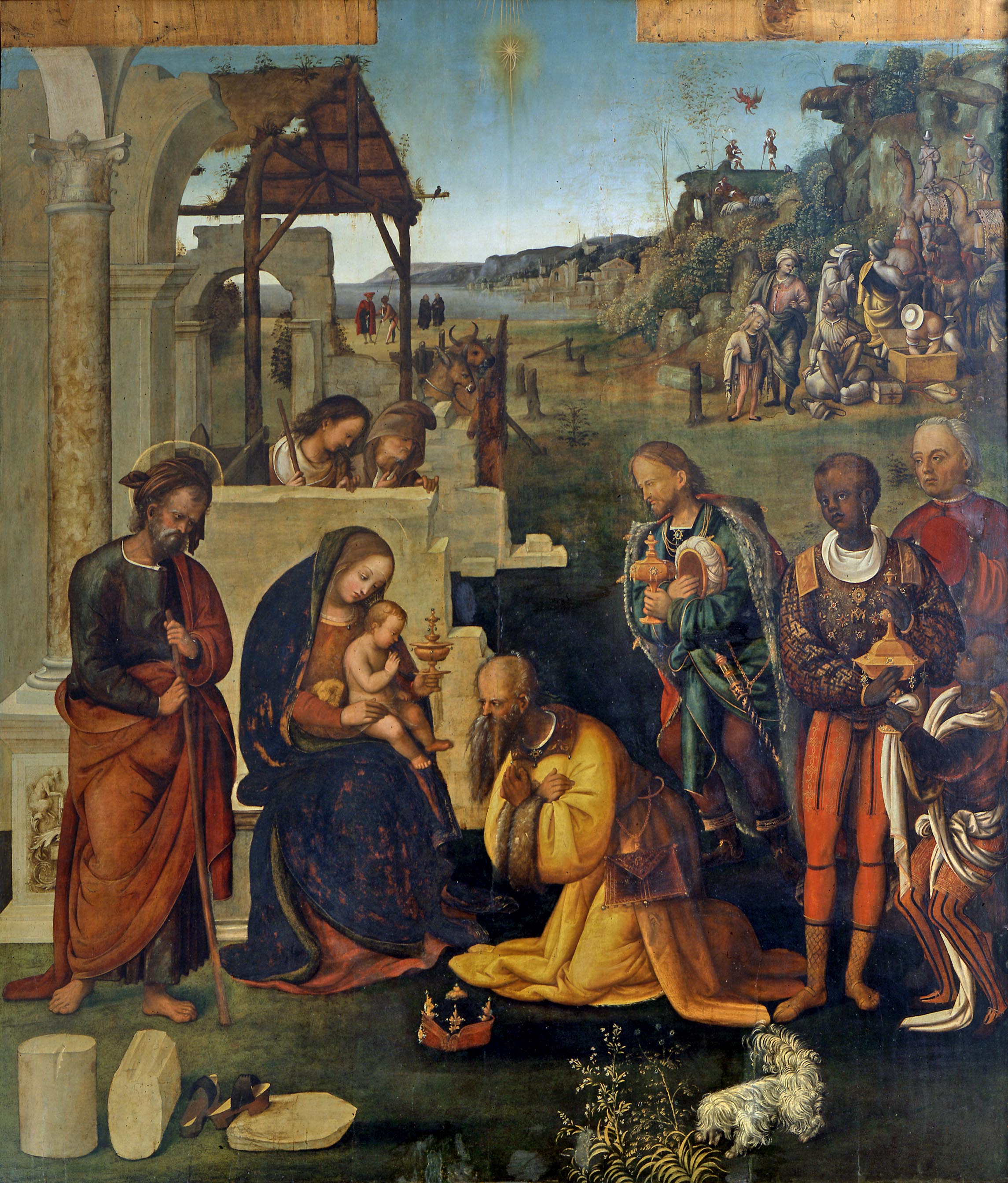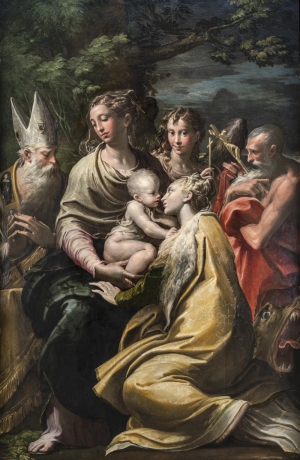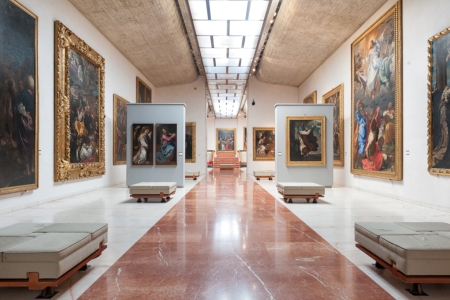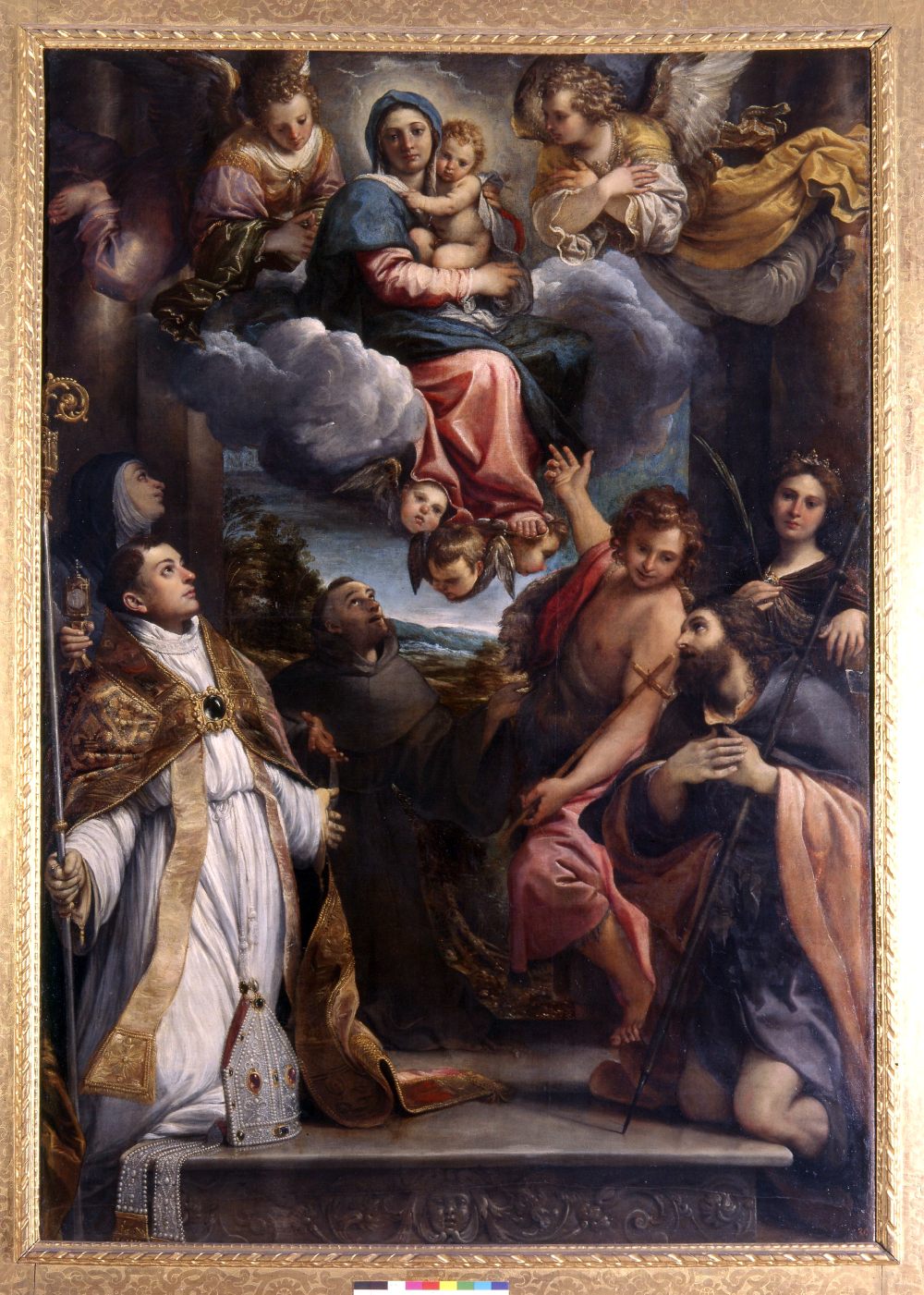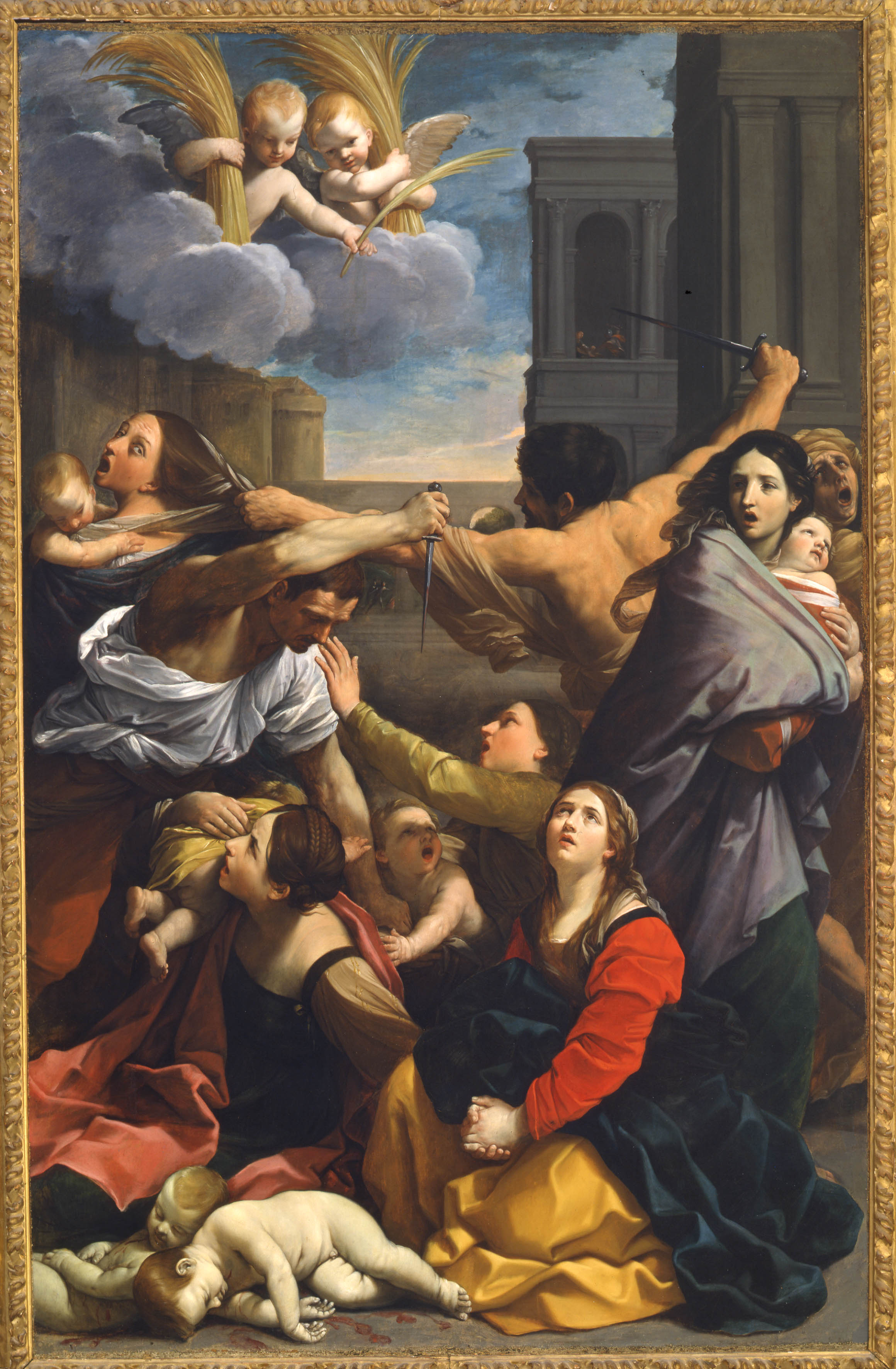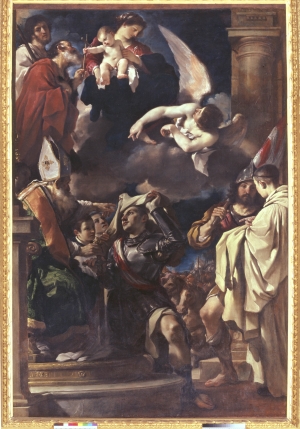Interview with Maria Luisa Pacelli
Director of the Pinacoteca Nazionale di Bologna
The Pinacoteca Nazionale di Bologna was founded in 1808 as a picture gallery collecting, preserving, and passing on the great Bolognese artistic tradition. How has it evolved from its foundation to the present day?
The gallery was established within the Academy of Fine Arts. Its original core collection constituted the picture gallery of the School of Painting and therefore had educational and training purposes. Over time, acquisitions and the collection grew, and with them the conviction that a collection dedicated to the great Bolognese artistic tradition should be established. In 1882, the Art Gallery broke away from the Academy of Fine Arts to become a museum in its own right, open to public use.
The modern history of this institution, on the other hand, begins after World War II, when Cesare Gnudi became area superintendent and takes over responsibility for the museum. In the many years of his direction, Gnudi put into practice a vision of the museum that set the standard for his extraordinary ability to hold together scientific, technical and political instances. The complete renovation of the museum, carried out working side by side with architect Leone Pancaldi, was fuelled by the studies on the Bolognese artistic tradition carried out with a group of exceptional scholars, such as Francesco Arcangeli and Gian Carlo Cavalli, counterpointed by the memorable Biennali di Arte Antica. Heir to this tradition, as well as a participant in the project that saw the birth of the new Pinacoteca, is Andrea Emiliani, to whom Gnudi will pass the baton and who will direct the institute for many years, integrating work for the museum with work in the territory.
In more recent years, the museum has gradually fallen into a cone of shadow, inexplicably lagging behind, given the relevance of its history and heritage, with respect to its recognition as an institute of national interest only in 2020, and its consequent autonomy. This coincided with my taking office and since then, amidst a thousand difficulties caused by a serious shortage of staff and many problems in terms of operation, we have resumed a programme of proposals aimed at relaunching and repositioning this institution, first and foremost in Bologna, with the idea that this museum should once again become a protagonist of the city’s cultural life. The people of Bologna, those who live in this city, must perceive the Pinacoteca as a place that belongs to them, not only because it is a public institution, but also because it preserves a collection closely linked to the territory, which tells its story through artistic documents of the highest quality from the 14th to the 19th century.
The recent exhibition “Giulio II e Raffaello. Una nuova storia del Rinascimento a Bologna” was an opportunity to reorganise the rooms dedicated to this particularly lively artistic season for the city. How important are temporary exhibitions for promoting knowledge of the museum?
Exhibitions are important because on the one hand they make it possible to spread the research carried out around themes that are significant for the museum’s heritage and the values it embodies, and on the other hand because they attract the attention of a public accustomed to being stimulated by an infinite number of proposals. Of course, it all depends on how and why an exhibition is held at a certain time and at a certain institution. The reasons and objectives of an exhibition programme are very different depending on contexts and situations. After the earthquake in Emilia in 2012, when I was director in Ferrara, there was, for example, the need to valorise the heritage that had been taken away from public use with the uninhabitable museum venues, but also to contribute to the relaunch of the territory wounded by the earthquake. In that context, we produced monographic exhibitions for European and non-European venues that made ‘our’ artists known, for example Michelangelo Antonioni and Giovanni Boldini, while for the Palazzo dei Diamanti we worked on some salient episodes in the city’s cultural history, with exhibitions such as De Chirico in Ferrara, and Orlando Furioso 500 anni.
In the case of the Pinacoteca di Bologna, the primary need was instead to give the museum back an active role as a protagonist of cultural life, and at the same time, to initiate a process of verification and rethinking of the permanent exhibition routes. To initiate this programme, we chose to design temporary exhibitions focusing on themes inherent to the museum’s heritage, and to place them within the exhibition itinerary, rather than in detached rooms, which allows us, in preparation for the exhibitions, to also rethink the itineraries of the thematic areas concerned: to date, the block dedicated to the Bolognese Renaissance, with the exhibition focusing on Raphael’s Portrait of Julius II, which opened last November; and next autumn, the gallery and rooms dedicated to the Baroque, when we will present the exhibition on Guercino.
Thirty rooms to tell the story of Bolognese painting from the 14th to the 18th century. Is there a common threadlinking these four centuries of extraordinary painting?
Certainly, there are aspects that are common to many of these artists. It is obvious, however, that we cannot take this to extremes because as strong as the Bolognese tradition is, so are the personalities of the individuals. In any case, one of the characteristics of the Pinacoteca, which is also emerging from what we are telling ourselves, is the great coherence of its collection: here we can clearly see the development of Bolognese art from the 14th to the 18th century, interpreted by its greatest artists. With regard to the element that unites artists such as Vitale da Bologna and Annibale Carracci, this is certainly the attention to the real, to the real datum, which in Vitale is manifested with an accentuated expressionism, reminding us how Bolognese history is rooted in the earth, in the agrarian and rural way, while in Annibale in the direct study of nature, accompanied, in his case, by that of ancient models, filtered through the Renaissance. This tendency can also be seen in artists working in Bologna, such as Francesco del Cossa, born in Ferrara, who in the Merchants’ Altarpiece shows a different register, more concrete and earthly than that deployed, for example, in the refined figurative programme of Palazzo Schifanoia in Ferrara.
How important was the contribution of the Carracci, Guido Reni and Guercino, who are widely represented in the Pinacoteca, not only in the evolution of Italian painting, but also for the museum’s own identity?
The works of these painters form the core of the museum, the primary reason why, for example, many scholars visit the Pinacoteca di Bologna: only here is there such a large and high representation of these masters. They are artists, with the exception of Ludovico Carracci, who lived and worked in Rome for many years, spreading their word. They developed a language that, by returning to the direct study of nature and the revival of antiquity through Renaissance models, led to an overcoming of Mannerism and the advent of Baroque. Central to this renewal is the recovery of reality and the imitation of truth, which finds its daily practice of development in drawing, evident in the art of the Carracci as in the idealised classicism of reality of Guido Reni. Guercino, on the other hand, is the artist who synthesises these tendencies, who, even compared to Guido, returns to be extremely expressive and capable of bringing into play a very rich palette, even in his first trials, such as the marvellous altarpiece of the Vestizione di San Guglielmo that we host in this museum.
Equally unique and important, though less well known, is the section dedicated to the Middle Ages, which recounts a historical period in which the city, as we know, was a centre of great cultural importance. In addition to the gold funds of the extraordinary masters who worked in the great decorative sites of the churches of Bologna, this section also includes frescos taken in the post-war period from some of those sites, such as the convent of San Francesco or the small church of Mezzaratta. Taken from their sites of origin for reasons of protection, today they are also one of the special features of the Pinacoteca di Bologna.
What are the values and objectives that identify your leadership?
An important objective is certainly to return this museum to its rightful position and role, first and foremost by re-establishing a strong link with the city through the promotion of the study and knowledge of its heritage and history.
The first exhibition I planned explored, not surprisingly, the theme of the origins of the Pinacoteca and the role Antonio Canova played in it, with the recovery of Italian works from France after the fall of Napoleon. In Bologna, the return of the works, later incorporated into this collection, was celebrated with an exhibition that took place in the Spirito Santo church. This was the city’s first public exhibition, which in some way enshrined a pact between the people of Bologna and their artistic heritage, a pact that our exhibition in 2021 sought to revive.
In order to make this space attractive and welcoming, I also feel it is important to pursue, along with the exhibitions, a rich and varied calendar of initiatives that can appeal to different audiences. We have proposed activities for schools, families, and adults, such as workshops, guided tours, lectures, art history lessons, reading groups, lecture series, and live performances, which have met with a response that exceeded our expectations.
The other element we have put in place is that of alliances and collaborations with those working in the city: with the University’s Department of the Arts we have undertaken and realised several initiatives, not least the exhibition Giulio II e Raffaello. Una nuova stagione del Rinascimento a Bologna, but also a project in which we host weekly curricular art history lessons throughout the academic year, which are also open to the public by appointment; while with the Academy of Fine Arts we carry out an educational programme that involves the museum staff, their Restoration School, and their Department of Communication and Art Education: for the students it represents an important moment of training, for the museum an opportunity to make use of experimental practices and practices on which the teachers and students of the Academy do research. Finally, with the municipality, on the occasion of the exhibition on the Renaissance, we have promoted meetings with the aim of bringing together the institutions that conserve heritage pertaining to the period, and at the same time we have created a common communication coordinated by the municipal administration’s tourist promotion body.
Another vital aspect for a museum is to be networked and in contact with other institutions in Italy and abroad, to develop common projects and share technical and scientific knowledge. In this area, we have initiated a series of collaborations, exchanges of works and projects: last year, the Pinacoteca hosted Domenichino’s Sibilla Cumana from the Galleria Borghese in Rome, a work around which we developed a programme dedicated to the artist’s important musical interests; another important guest was Raphael’s Portrait of Julius II from the National Gallery in London, obtained in exchange for our extraordinary Ecstasy of Saint Cecilia, also by the Urbino master; while the loan of Guido Reni’s Strage degli innocenti to the Prado Museum in Madrid is still in progress.
Despite being a challenging programme, all this represents the ‘easy’ part of the project to redevelop and relaunch the Art Gallery. The real difficulties have to do with a largely insufficient number of staff in a number of strategic offices, and with the structural and service deficiencies of the relevant venues in need of a great deal of work. In essence, this involves carrying out major works on both museum premises – the Pinacoteca and Palazzo Pepoli in Campogrande – for which we have obtained PNRR funds.
The lessons in the Pinacoteca, as you mentioned, are the result of a collaboration with the Department of Arts of the University of Bologna. How important is it to bring didactics inside the museum to make it an active space in the cultural growth of the city?
We are a public museum at the service of the citizenry, to be visited not only at special events, but hopefully on an ongoing basis. Initiatives of this kind are therefore important because they create real opportunities for knowledge on the basis of a long-term project. It is no coincidence that we have had very positive feedback in relation to this experience, even from people who live in the neighbourhood and were happy to ‘return to their school desks’. As far as the students are concerned, the project allowed us to strengthen a practice that already existed, because it is customary for teachers in Bologna to bring their classes to the museum, but also to nurture in the students the perception of the Pinacoteca as an extension of the school, a home to be lived in and inhabited. The aim is also to create extraordinary opportunities, very significant, for example, was the possibility of viewing a selection of ancient drawings, normally not accessible for conservation reasons, during a History of Drawing lesson. Another interesting aspect of this initiative is to create an opportunity to bring students, i.e. young people, into dialogue with people of different backgrounds and ages, who also enthusiastically embraced the proposal.
With the school of Roberto Longhi, modern Italian art history as a methodology was born in Bologna. What does the city retain from this crucial lesson?
The University of Bologna’s Department of the Arts, which is indeed historically very important, continues this tradition of academic studies with outstanding lecturers and scholars, some of whom are students of Longhi’s pupils. A tradition that, for the modern history of the institution, the one that began with Cesare Gnudi in the post-war period, which saw the museum’s rebirth also thanks to the contribution made by the University’s research on the history of Bolognese art, is strongly connected to the study of the heritage preserved in the Pinacoteca.
What works in the Art Gallery in your mind and heart appeal to you the most?
Certainly Raphael’s The Ecstasy of St. Cecilia, not only because it is a masterpiece by an absolute genius, but also because the painting was the key to getting in touch with and thus understanding some of the fundamental values of this museum, for example, the great 17th century Bolognese. In fact, the arrival of the painting in Bologna in 1516 changed the history of art in this city – a fact that is evident when walking through the museum.
A work I also love very much is Parmigianino’s Saint Margaret, painted in Bologna, where the artist had settled in 1527 to escape the devastation brought to the capital by the Sack of Rome. I love this painting first and foremost because Parmigianino is one of my favourite artists, but also because it was so important for the later development of Bolognese art, as the many mentions of the saint in works in the museum show.
Among my favourite paintings is the portrait of the mother by Guido Reni, known as the Portrait of a Gentlewoman, which I find extraordinary above all because Reni, although a classicist, here manages to be so true, so real, and at the same time so beautiful, as to escape, as only geniuses can, any kind of classicisation; while, in the medieval sphere, the cycle of frescoes from the church of Mezzaratta returns a great emotion to me, perhaps also because of the extraordinary words written by Arcangeli. The frescoes were detached in the 1950s and reassembled in a wing of the Pinacoteca, a practice, that of tearing, which has been strongly questioned over the years. In this case, it tells important aspects of the history of this museum conceived in the post-war period, when, after the devastation of the bombing, the protection of the artistic heritage was the overriding concern.

